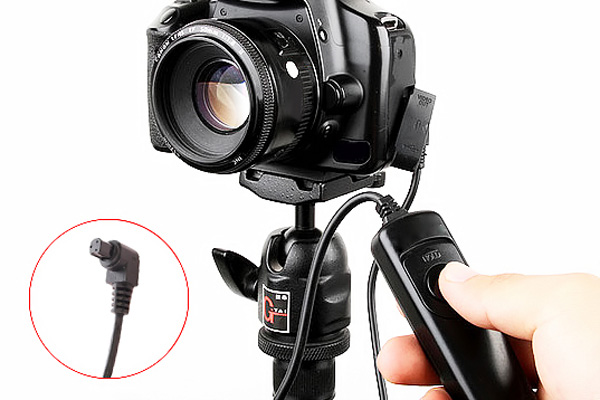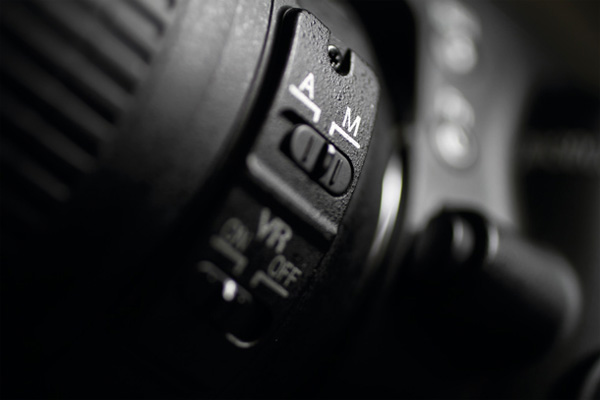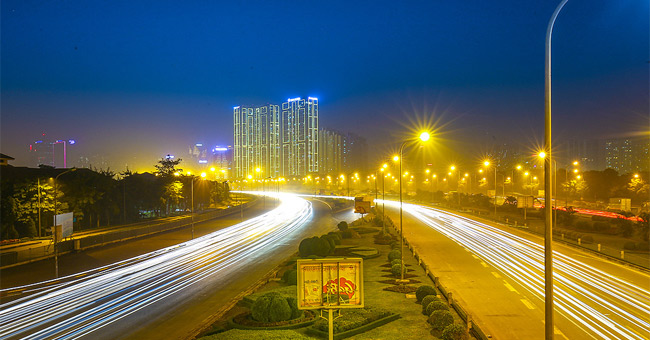The secret of creating unique photos with long exposure techniques
Long exposure is one of three types of motion shots, using a slow shutter speed to show the passage of time in still images. The photographer will use blur motion effects to make the image more interesting and impressive, giving the audience a "speed" feeling.
- Instructions for taking photos with flash
- Avoid red-eye phenomenon when taking photos
- Self-study photography - Macro mode
To take a long exposure, you need to use a tripod and a trigger. Time is a very important factor, sometimes you will have to wait relatively long to get beautiful views. Besides, we also need a lot of time to capture and adjust the position after shooting, etc. Therefore, it takes patience and avoids the slightest impact, which also causes the waiting process. Your become meaningless. The picture will definitely not be beautiful, but it is your idea. In this article, we will provide readers with tips to limit the impact of long exposure photography.
1. Use a good quality tripod:
With photos taken at 1/8 second, you can still hold your breath to reduce camera shake. However, for exposures of 2 seconds or longer, we basically can't do it without the help of a tripod. Some people can take advantage of tables, chairs, pedestals to set up cameras and shoot, but these measures are only temporary and do not completely overcome the image shake.

The most effective way to solve this problem is to use a tripod. Note that good quality, sturdy, durable tripods should be selected, because poorly constructed tripods will not keep your camera stable during shooting.
2. Use the self-timer or soft-press mode:
Even if you have used a tripod, only the slightest movement before shooting can cause your image to vibrate, and specifically to press the shutter button. There are many ways to fix this problem, for example, you can set a 2-second timer before shooting to avoid your hand operation affecting the camera.

However, the most effective way is to buy a soft cord to connect to the device. The cord not only helps you control the shutter release remotely, but is also very effective when you want to expose it in Bulb mode (the shutter speed is not limited), by pressing and holding the shutter button on the machine for longer than 30 seconds without making camera shake is impossible.
Soft cords come in two types: wired and wireless. Wired type uses 3.5 mm plug and can connect to the camera via a headphone or microphone slot. Now you can buy this accessory on the market for quite cheap price, about 100 thousand dong.
3. Manual focus:
Operation of autofocus on the camera is convenient but when shooting long exposure, it is less effective, even the opposite. The reason is that most long exposure images are taken when it is dark or in low light conditions, while the autofocus function usually works best only when the ambient light is sufficient.

On the other hand, the camera's refocusing mechanism during exposure will produce unnecessary vibrations when shooting. So you should switch to manual focus and focus right from the start to get the best quality photos .
4. Locking mirror flip:
As mentioned above, even the slightest movement inside the camera when shooting long exposures can lead to blurry images. For cameras with flip mirrors, the mirror's flip motion when shooting is small but can also cause the camera to vibrate, resulting in unexpected quality finished photos.

To fix this, you need to enable Mirror Lockup (Mirror Lockup) depending on the camera line. When locking the mirror, the machine will proceed to flip the mirror first, then start capturing the image signal into the sensor. When the sensor stops receiving the signal, the mirror flips back to its original state.
5. Use the optimal aperture of the lens:
When shooting long exposures, aiming to extend the exposure time, we often reduce the ISO speed to the lowest or maximum aperture. However, for most lenses, when the aperture is too small (f / 16 or smaller), images are often diffraction (diffraction).

Each different lens usually has a range of apertures that when taken will produce the highest definition image. Usually, for most lenses, it is the aperture range from f / 5.6 to f / 8.0. You should consult online forums, or try it yourself to find the optimal aperture range for your lens.
Refer to the following articles:
- 10 tips for taking beautiful photos with digital cameras
- 10 simple photography techniques for impressive photos
- 10 points travel camera 'eat off' camera phone
Hope this article is useful to you!
You should read it
- Night photography techniques for beginners
- How to prepare images of Ephoto360
- The most cute and adorable set of cat wallpapers
- 25 beautiful pictures of Vietnam make you say 'My country is so beautiful!'
- Turn on the secret of long exposures in photography
- Take a look at the same location, how the two pictures were taken by different professional and amateur photographers!
- Take beautiful photos on the plane with the following tips
- Beautiful, unique 20/10 images for women
- Use shading and contrast in photography
- Take photos of the fanciful sky landscape with the following 5 tips
- What is exposure and exposure triangle in photography?
- 10 simple photography techniques for impressive photos





 What is exposure and exposure triangle in photography?
What is exposure and exposure triangle in photography? Admire 10+ virtual long exposure images of the world around us
Admire 10+ virtual long exposure images of the world around us Turn on the secret of long exposures in photography
Turn on the secret of long exposures in photography Admire the beautiful dual exposure wallpapers
Admire the beautiful dual exposure wallpapers How to use Photoshop CS6 (Part 3) - Create Manipulation artwork with exposure effect
How to use Photoshop CS6 (Part 3) - Create Manipulation artwork with exposure effect Instructions for creating double exposure images in Photoshop
Instructions for creating double exposure images in Photoshop